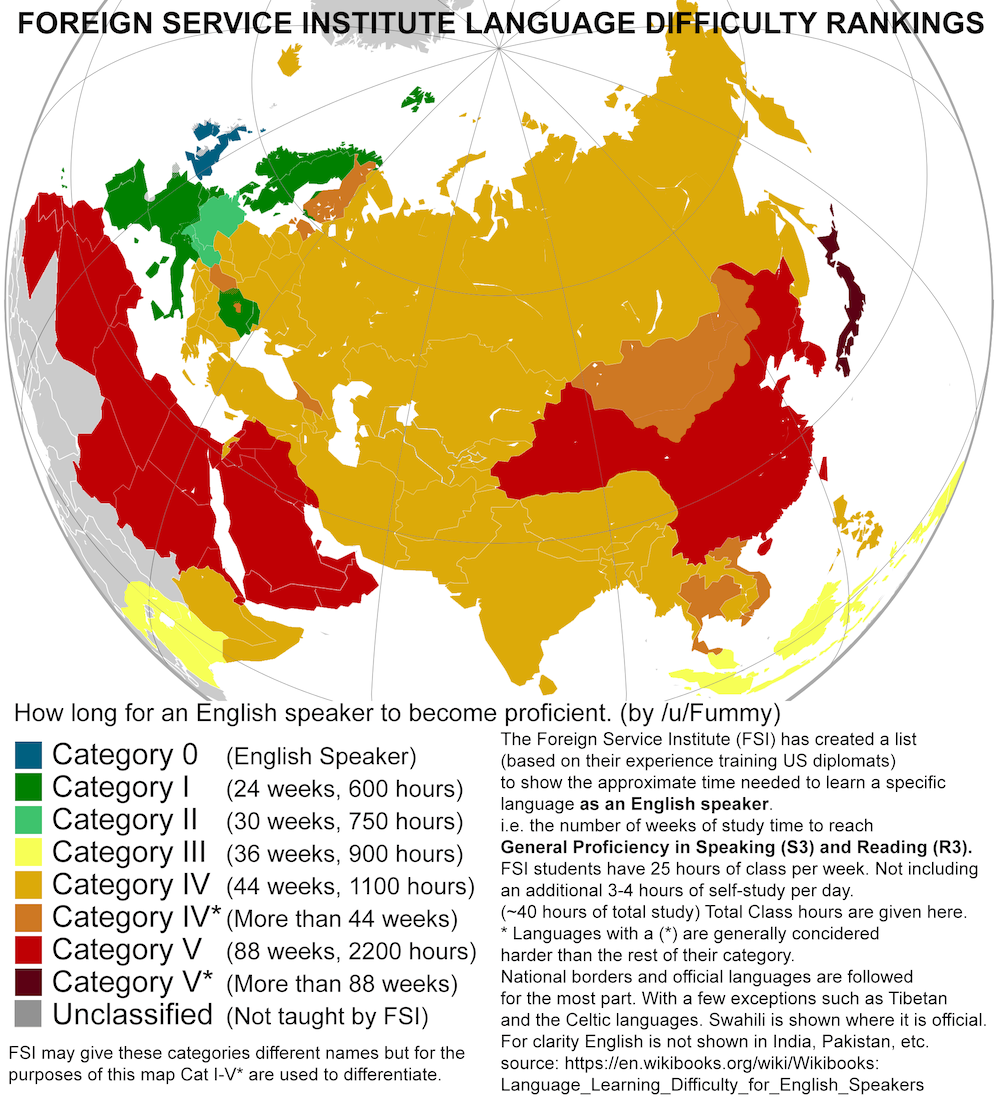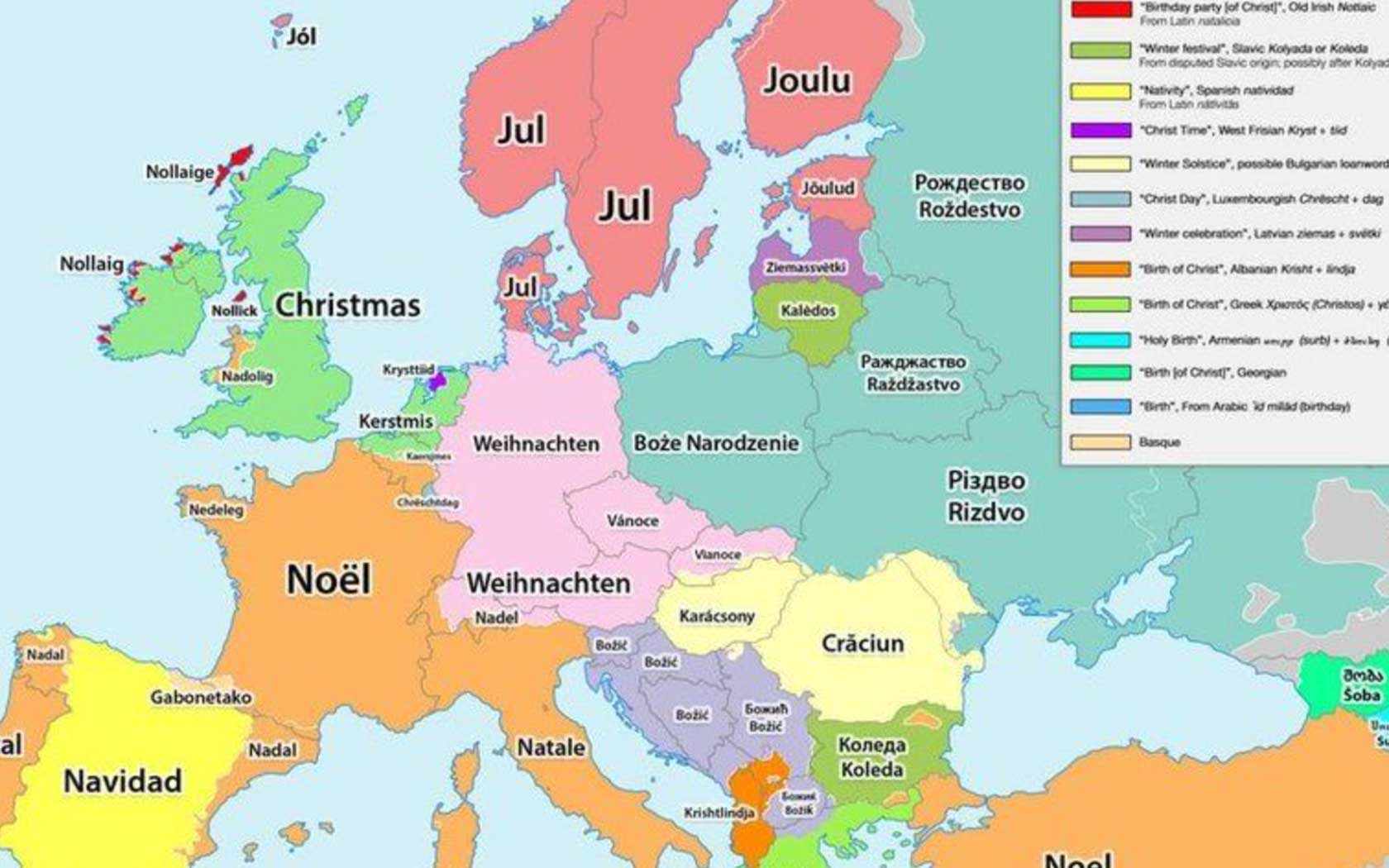This Intriguing Map Ranks Languages By How Easy They Are To Learn

Many dream of being able to learn a language, but few go on to really parlez français – or whichever language you choose. Learning a second language takes time, dedication and practice. Quite honestly, nobody got time for that, so what’s the best language to learn?
[related_articles]43483,31194,28322[/related_articles]It turns out that not all languages are equal when it comes to learning them anew. For English speakers, for example, to learn a language like Hebrew is much more difficult than learning Spanish because it uses a different alphabet and has fewer words in common with English, for example. The below map charts the difficulty of learning different languages around the world.

While it isn’t comprehensive (few Indigenous languages are considered, for example) it does look at many of the most common second languages. Check out a closer look at European languages below.

If you’re keen to pick one up, perhaps the best language to learn is one of the easier ones. The Foreign Service Institute in the United States has helpfully ranked languages by difficulty based on the average time it takes to become proficient in them. The maps are based on the below ranking, but take a few other details into account.
[related_articles]55242,52883[/related_articles]Those which are classified “Category I” generally take from 24 to 30 weeks (600 to 750 class hours) to learn. Category IV languages, aka the “super-hard languages” take closer to 88 weeks (2200 class hours). By this ranking, Danish, Italian or Spanish could be the best language to learn for English speakers.
See examples of the current list of languages below:
Category I languages: 24 to 30 weeks (600 to 750 class hours)
- Danish (24 weeks)
- French (30 weeks)
- Italian (24 weeks)
- Portuguese (24 weeks)
- Spanish (24 weeks)
- Swedish (24 weeks)
Category II languages: 36 weeks approx (900 class hours)
- German
- Haitian Creole
- Indonesian
- Malay
- Swahili
Category II languages: 44 weeks approx (1100 class hours)
- Albanian
- Czech
- Finnish
- Greek
- Hebrew
- Icelandic
- Russian
- Thai
- Turkish
- Vietnamese
Category IV languages: 88 weeks (2200 class hours)
- Arabic
- Cantonese (Chinese)
- Mandarin (Chinese)
- Japanese
- Korean
Keep in mind that the above doesn’t account for dialects within those languages either. Check out the full current list on the Foreign Service Institute’s website.
[related_articles]68003[/related_articles]Of course, this is only for those who speak English as their primary language. English was used as the baseline for the rankings, and explains why languages such as Cantonese (Chinese), Japanese and Arabic are among the most difficult to learn – using a separate alphabet and writing system for one, and having complex grammar very different to that of English.
Want to learn a language? Try these four free apps to give learning a language a go. If you truly can’t be bothered with all that, these Google headphones could translate for you.
(Lead image: u/Fummy / Reddit)









